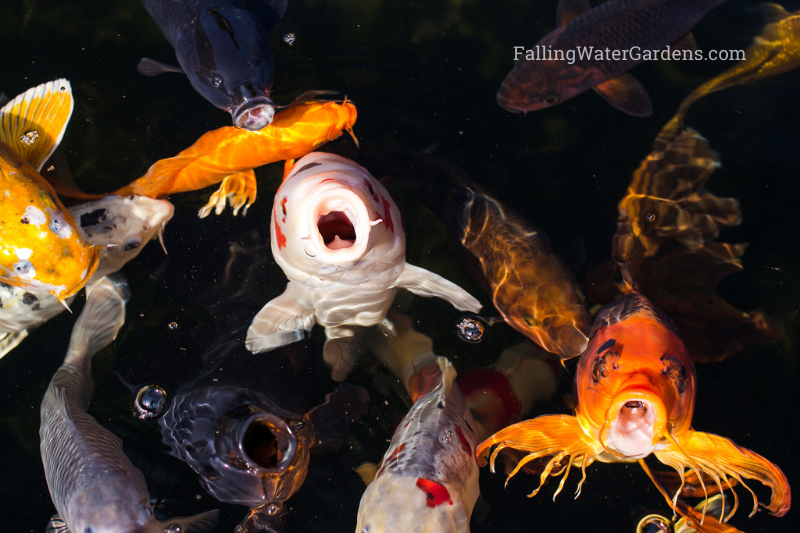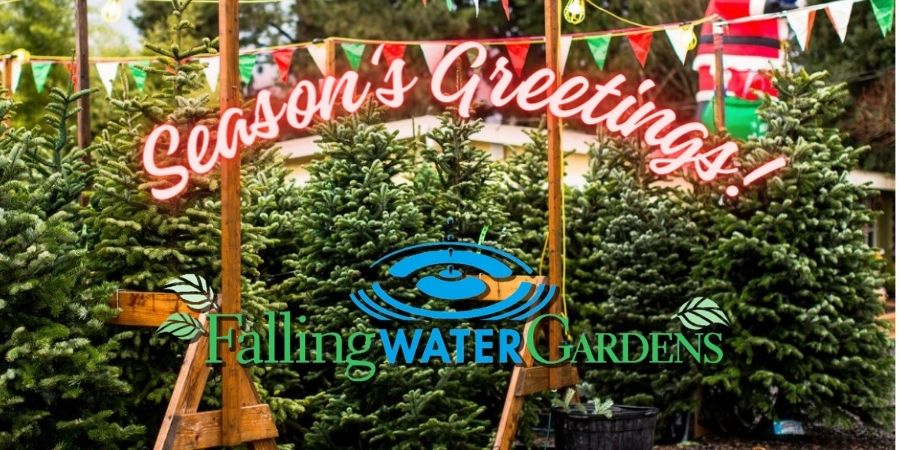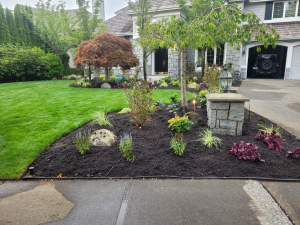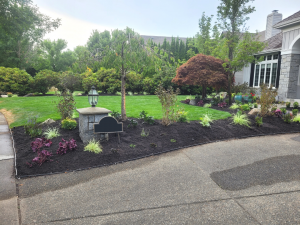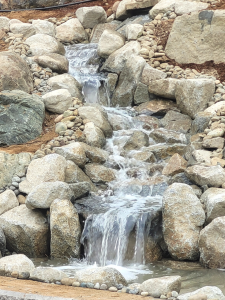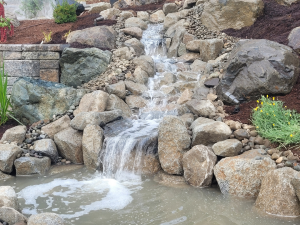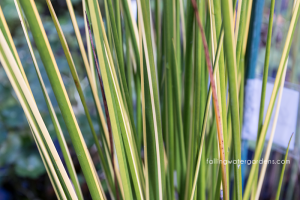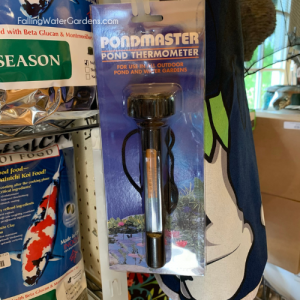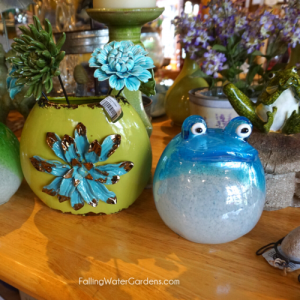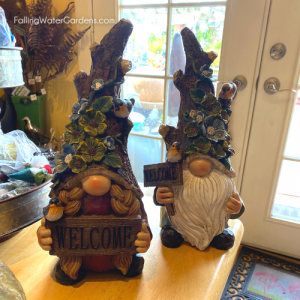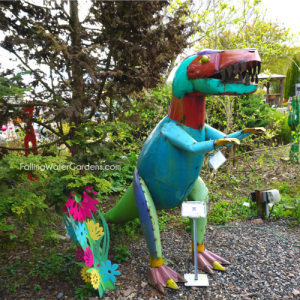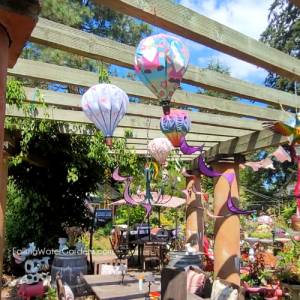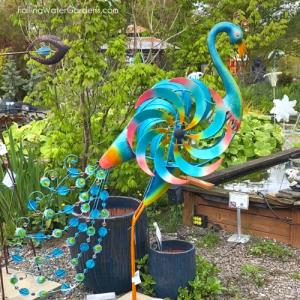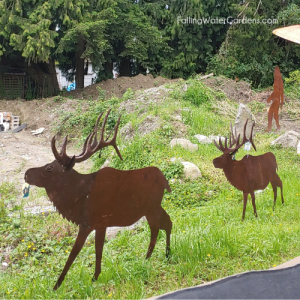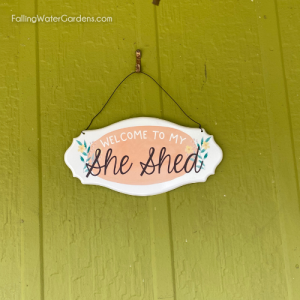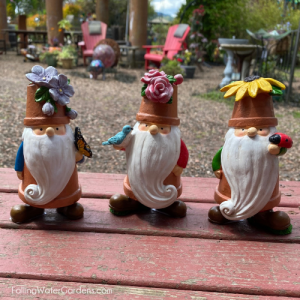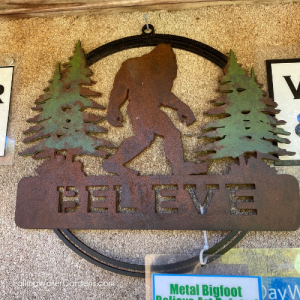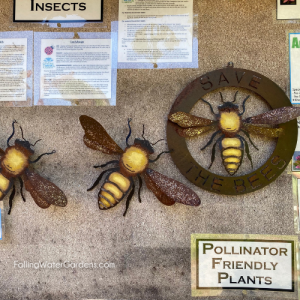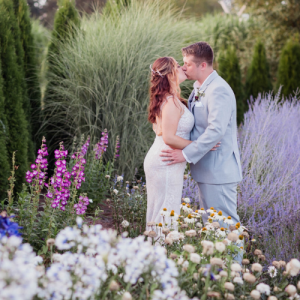Fall is just around the corner and we have all the specials for you! Be sure to check out the Featured Koi and fish advice as well as all the featured plants and gift shop items!
Nursery News
We are very sad to see the season begin to come to a close, but that means it is time for our end-of-season sale! Aquatic and terrestrial plants are buy 3 get 1 free, mix and match. We are also having a buy 3 get 1 free sale on our fish over $100! Check out the Featured Plants tab to see what plants are looking good this season.
HOURS OF OPERATION NOTICE
September 20th, 21st, and 22nd we will be closed.
We will be returning to our fall hours starting on September 23rd
Friday, Saturday, Sunday, Monday from 10 AM to 5 PM.
Closed Tuesday-Thursday, except by appointment only
Featured Design
Garden Installation – Snoqualmie
These Snoqualmie Ridge customers bought a home that had an existing front garden that consisted almost entirely of deciduous plants. The effect was that the garden looked pretty much dead all winter. They asked Rick to come up with a more evergreen and deer resistant front garden. The house is gray with black and white trim so Rick chose a color scheme of black, white and purple plants. Almost every plant Rick brought in is evergreen so it will look sharp even in the dead of winter.
Pondless Water Feature – Sammamish
These Sammamish customers have a new construction home with a new back garden. They wanted a pondless water feature to finish the garden with a lot of white-water noise to drown out a busy road.
Featured Koi of the Month: Goshiki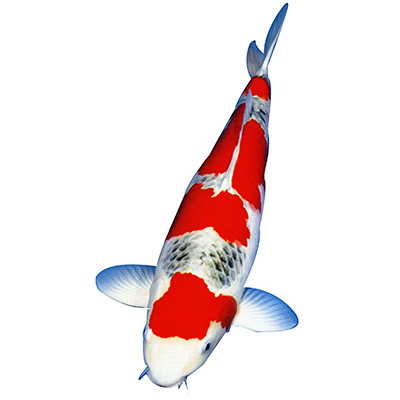
Goshiki, meaning 5 colors in Japanese, usually have a white base color with a fishnet pattern. They have black and blue edging with red and black patterns overlaying the base. Unlike the Kohaku, the Goshiki will have bright and bold Hi plates.
If you see an excess of black spots (also known as Sumi-black spots) there will be an imbalance of the markings on the adult koi.
Fish Health
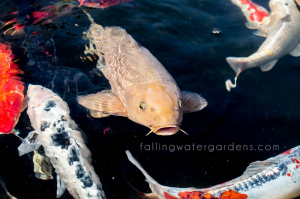
KOI OWNERS: As the water temperature dips below 60 degrees, we want to switch back to a cool-season/wheat germ food (we sell this at the nursery). Continue feeding fish until the water temperature hits 50-55 degrees (typically mid-October).
As the water temperature cools fish cannot digest their food as efficiently. High protein Summer food can actually rot in their gut and cause abscesses. As the water temperature drops below 60 degrees you should switch to a cool-season or Spring/Fall food that has more wheat germ which is easier for your fish to digest. When the temperature drops below 50 you should stop feeding your fish entirely until Spring.
Your Fall maintenance To-Do list includes the following:
- Protect your fish health by changing to cool-season food.
- Cut back aquatic plants, clip and trim dead plant material, remove annuals like hyacinth and lettuce, prepare plants for winter.
- Check the pump and clean the volute
- Check the skimmer frequently during fall leaf drop and winter winds.
- Clean the biological filter, drain and store for winter
- Turn off the UV Sterilizer and (when practical) drain and store.
- Skim the pond and remove as much dead organic plant material as possible.
- Lift the pump to winter height (When practical)
- Net the pond to collect falling leaves. (When practical)
NOTE: Every pond or water feature is unique, you may not have all of the items listed.
Plant material:
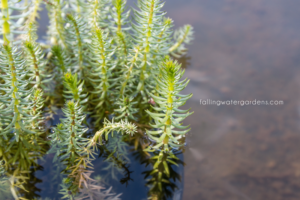
Plants start to die back when the water temperature drops. Cut back plant material that is decomposing and dropping to the bottom of the pond. Dispose of annual plants before they can sink to the bottom. Don’t cut back anything that is evergreen.
Pumps:

Two common problems which shorten the life of your pump and void your warranty.
First, weak connections on cords. Never pull your pump up using the cord. Stretching the cord can weaken connections within the pump or cause a leak in the seal around the cord. Either problem will cause the pump to start shorting out your GFI and you’ll need a new pump. Pump manufacturers exclude cord problems from their warranty, so never let anyone pull your pump by the cord!
Second, Gunk Clogging the Inlets. Look in the back of the skimmer box where the pump is and make sure no pine needs or other gunk has gotten back there. Those of you who do not have a skimmer must be even more diligent in checking your pump. Failure to keep the pump inlets clear voids your warranty and shortens the life of your pump, so make it a habit to check the inlets periodically, especially in the fall when the wind starts to knock all the needles out of your Douglas fir.
Skimmer:
 Once the leaves have all fallen you can clean it less often through the winter. However, as we head in to fall and the leaves and needles start to fall it is important to clean your skimmer more frequently. Remember that you must periodically pull the filter matting out of your skimmer and hose it off very well to clear the needles out of it.
Once the leaves have all fallen you can clean it less often through the winter. However, as we head in to fall and the leaves and needles start to fall it is important to clean your skimmer more frequently. Remember that you must periodically pull the filter matting out of your skimmer and hose it off very well to clear the needles out of it.
UV Sterilizer:

We suggest that you turn your UV sterilizer off by unplugging it around October 15th. This is because the water temperature approaches 40 degrees algae growth becomes less prevalent. If you turn it on in April and turn it off in October, you can use the UV bulbs for two full seasons and replace the bulbs every third year. Keep in mind that if you don’t turn off the UV by unplugging it, then you would want to replace your UV bulbs every season.
If you keep your pump running all winter then you don’t usually have to drain your UV. If you plan on turning the pump off during the winter, then the UV sterilizer valve should be closed and the UV drained to protect it from freezing.
Falling Water Designs suggests that you run your pump all year long because moving water almost never freezes and your pond will be healthier if you keep the pump running.
Biological Filter:

Clients who have a biological filter (which is not the up-flow filter that many have at the top of their waterfall), can clean and drain it for the winter. Once the water temperature drops to 40°F, the beneficial bacteria in the filter mostly die and stop working. Cleaning and draining the biological filter will prolong the life of the filter media. Watch our How-To video here.
Finally, if this all seems like too much work, Falling Water Designs offers Fall Maintenance Visits. Fill out this contact form to schedule your Fall Maintenance Visit.
Featured Plants
Here are this month’s featured plants. We think this selection would look great in your garden right now. Visit our plant database to learn more about aquatic & terrestrial plants. Click on the name of the plants below to learn more about each plant.
Aquatic plants
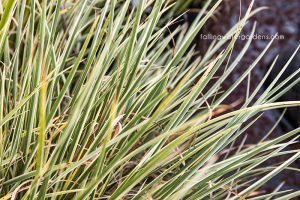 Acorus gramineus
Acorus gramineus
Excellent for brightening the edges of ponds or water gardens. Rich golden yellow blades provide colorful accents, even in lightly shaded areas. Slowly naturalizes by spreading roots. Crushed foliage emits a delightful scent. Evergreen.
An attractive rigidly upright growing 18-24 inch tall (taller if in wet conditions) sedge-like plant from New Zealand. The 1/8 inch wide needle-like leaves (elliptical in cross section) are deep green and striped along one edge with yellow. This plant prefers wet soil and seems to do best in loose soil with frequent to regular irrigation. It can also go in water if crown is out of the water – will grow to up to 3 feet tall.
 Hippuris vulgaris
Hippuris vulgaris
Common mare’s-tail looks like a robust green bottlebrush growing in patches primarily in the shallow areas of streams, ponds, and lakes or on wet muddy shores when water levels drop. This plant is characterized by unbranched stems, abundant whorled leaves, and inconspicuous flowers. The leaves and stems vary in form depending on whether they are growing underwater or are emergent. The underwater plant portions are limp, flexible, and have very long leaves. Emergent portions are stiff and erect, with short narrow leaves.
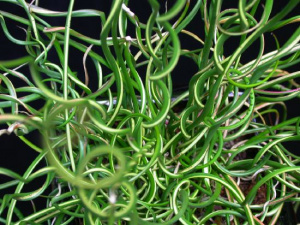 Juncus effusus ‘Spiralis’
Juncus effusus ‘Spiralis’
This grass-like plant is popular both in the garden as a specimen, or for using in cut flower arrangements. Leaves are round and stem-like, with a unique corkscrew spiral. A superb choice for beside a pond or stream, as a marginal water garden plant, or in any damp sunny area. Adapts well to growing in pots, and these are easiest to care for when sitting in a pan or tub of water. Evergreen in mild winter areas. Flowers are insignificant. Plants may be divided in early spring. Trim back any untidy stems to the base in spring.
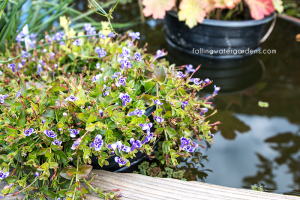 Lindernia grandiflora
Lindernia grandiflora
Creeping ground cover grown for its white and purple flowers that somewhat resemble small snapdragons (which they are related to). The small flowers appear in spring and last well into fall against bright green leaves that often become tinged with red in cool weather. Plants spread slowly by rooting stems and can reach up to 2′ across, though they grow no taller than 3-4″. Provide regular garden water in well-drained soils with full sun.
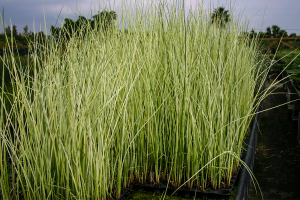 Scirpus lacustris ‘Albescens’
Scirpus lacustris ‘Albescens’
This plant forms clumps of tall extremely upright needle-like leaves with green and white vertical stripes – an elegant and airy accent for the edge of the pond. Moist soil or water up to 3″ deep.
Terrestrial Plants
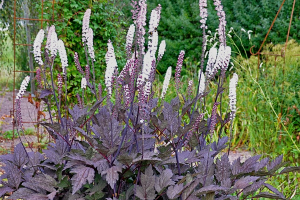 Actaea ‘Hillside Black Beauty’
Actaea ‘Hillside Black Beauty’
Unlike other bugbanes, ‘Hillside Black Beauty’ offers deep purple-black foliage. From late spring to late summer, its dark hue makes a wonderful backdrop for colorful foliage and flowering shade plants. In fall, fragrant, cream-colored flowers appear on tall, wand like stems. An added plus: this plant is deer resistant.
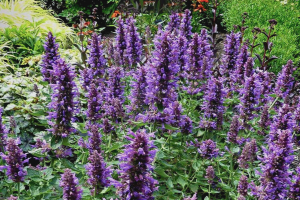 Agastache ‘Poquito Dark Blue’
Agastache ‘Poquito Dark Blue’
Agastache is a perennial plant with lovely flower spires that bloom all season long. The flower is found in purple to lavender, but can b may also bloom in pink, rose, blue, white, and orange. The Agastache is a plant that is tolerant of low water and poor nutrient conditions but provides you with a color display.
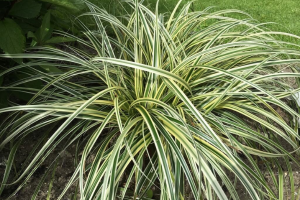 Carex oshimensis ‘Feather Falls’
Carex oshimensis ‘Feather Falls’
Feather Falls Sedge has finely textured, variegated evergreen foliage. It is remarkably durable and thrives in shade but will tolerate full sun without burning. It produces long, narrow leaves that arch up from the crow and weep to form a well-behaved clump. It produces delicate, feathery plumes that emerge in the spring and it makes an ideal container or landscape accent.
 Eleagnus ebbingei x ‘Gilt Edge’
Eleagnus ebbingei x ‘Gilt Edge’
The leaves of this evergreen shrub have sharp contrast between their dark green centers and brilliant gold margins. In October, small, silver-scaly flowers hide in the branches of ‘Gilt Edge’, but their presence is revealed by the exquisite fragrance. Like other Eleagnus, this is extremely adaptable, growing in full sun or part shade. It is drought tolerant and can be used as screening or hedging. Plant it as an accent plant, to brighten a dark spot, or use it in a mixed border with other shrubs and perennials.
 Kniphofia ‘Poco Red’
Kniphofia ‘Poco Red’
Kniphofia ‘Poco Red’ blooms from mid-summer into October and attracts hummingbirds and other pollinators to their nectar-filled blooms. They thrive in full sun and appreciate regular watering. They only require average soil and minimal care and are resistant to deer and wildlife.
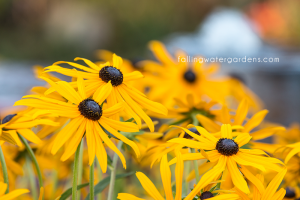 Rudbeckia fulgida ‘Goldsturm’
Rudbeckia fulgida ‘Goldsturm’
Black-eyed Susans are easy to establish, and they naturalize well and require little maintenance other than deadheading. Regular deadheading of the faded flowers keeps the plants in bloom longer. You can let the last flowers of the season remain on the plants to go to seed to feed the birds, but you will also get a good deal of self-seeding, which might not be a bad thing.
Plant Database

Have you checked out our plant database? It contains information about the plants that we sell at the nursery and more!
We have even taken it one step further and have incorporated QR codes into the database to help you save and recall information on the plants you are interested in at home or have bought from our nursery. You can bring us the saved plants from this data base to help us locate the ones you want. As well as when you come to Falling Water Gardens you will be able to scan the plant signs to get further information about the plants and flowers.

What is a QR code? In the simplest terms a QR code is a bar code. Most smart phones come equipped with a bar code/QR code reader that will scan the QR code and bring you to the web page of information about our plants. From there you can bookmark the page. If yours does not contain a QR code reader already, you can download one for free through your phone’s app store.
Gift Shop & Decor
Here’s a sample of items we think you’d enjoy this time of year. Be sure to visit the nursery to see ALL of the latest products and plants! We have a huge selection of décor and gifts to choose from!
Don’t forget to visit us for your staples, we carry Koi food and farm fresh eggs!

Wedding & Events Venue
Congratulations to all the newlyweds in 2022! Our gardens were filled with love and happiness all summer! Now that this season is wrapping up we are excited for the couples who are planning their weddings in our gardens for 2023!
If you or someone you know is planning to get married in 2023 or 2024, come tour our venue. Falling Water Gardens is nestled right outside downtown Monroe, about 34 miles northeast of Seattle. This 10-acre, romantic & rustic wedding venue is surrounded by green pastures of farmlands, home to gorgeous display gardens, and many breath-taking water features.
In addition to weddings, we can host events such as birthdays, graduations, baby showers, and corporate events. Reach out to us today to schedule and start planning your event!

